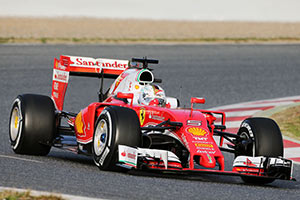SR71 wrote:
why do you think pat gave the context of only having 1 week. nowhere in the article did pat say he had enough time. error defaults to pats context of it not being a lot of time compared to an F1 team.
Okay that's just painful. He didn't specifically say they had enough time so they didn't have enough time? What sort of logic is that? You are literally ignoring everything ever just to bend a quote to suit your personal opinion, which is all okay, if it made some sense which it did not.
Do you see the word 'Suffered" in the above quote?
Yes I did. You picked the quote so there must have been some reason for you to pick that quote, which is why I asked the question.
If thats not enough for you (clearly it isnt) then please explain to me your professional knowledge of developing aero
Again, putting words in my mouth.
that encourages passing on a 1/4 scale model and how it is sufficient.
I'll quote myself here:
"They aren't perfecting aero, they aren't aiming for that .001sec improvement. They are simply aiming to solve an issue. Which wouldn't require much more than a simple car in the (then) current ruleset(it doesn't require a model that's well developed), see where problem points are and come up with an idea, which again will be a simple car that can show improvements."
The OWG were tasked with solving a problem. The problem that they had did not require many resources as it's simply solving a problem. They aren't designing the RB12 or anything, the task at hand did not require micro-aerodynamics.
I'll say it in other words:
If I have to put in screws, I would love to have a power drill, but a simple hand drill would do the job as well.
Oh, and here comes a funny argument, referencing my previous reaction:
PAt Symonds didn't specifically state he wanted a larger scale model, therefore, the quarter scale is enough.
If you cannot do that, please understand Pat Symmonds is smarter than you and he states it was hampering the research.
Yikes!
"None of us were actually aerodynamicists as our primary role"
So? The quote itself already implies that they do have experience in this field.
Congrats, the members of the OWG that was studying aero have all been employed in the F1 field. did you have a point?[/quote]
If you thought that your quote had a point, then yes. If you didn't think your quote had a point, then no.
SR71 wrote:
Could you please inform me of your professional knowledge of aero testing and simulation? do you currently work in the field?
Could you please actually read my posts before you start accusing me of whatever because I do not agree with you?


